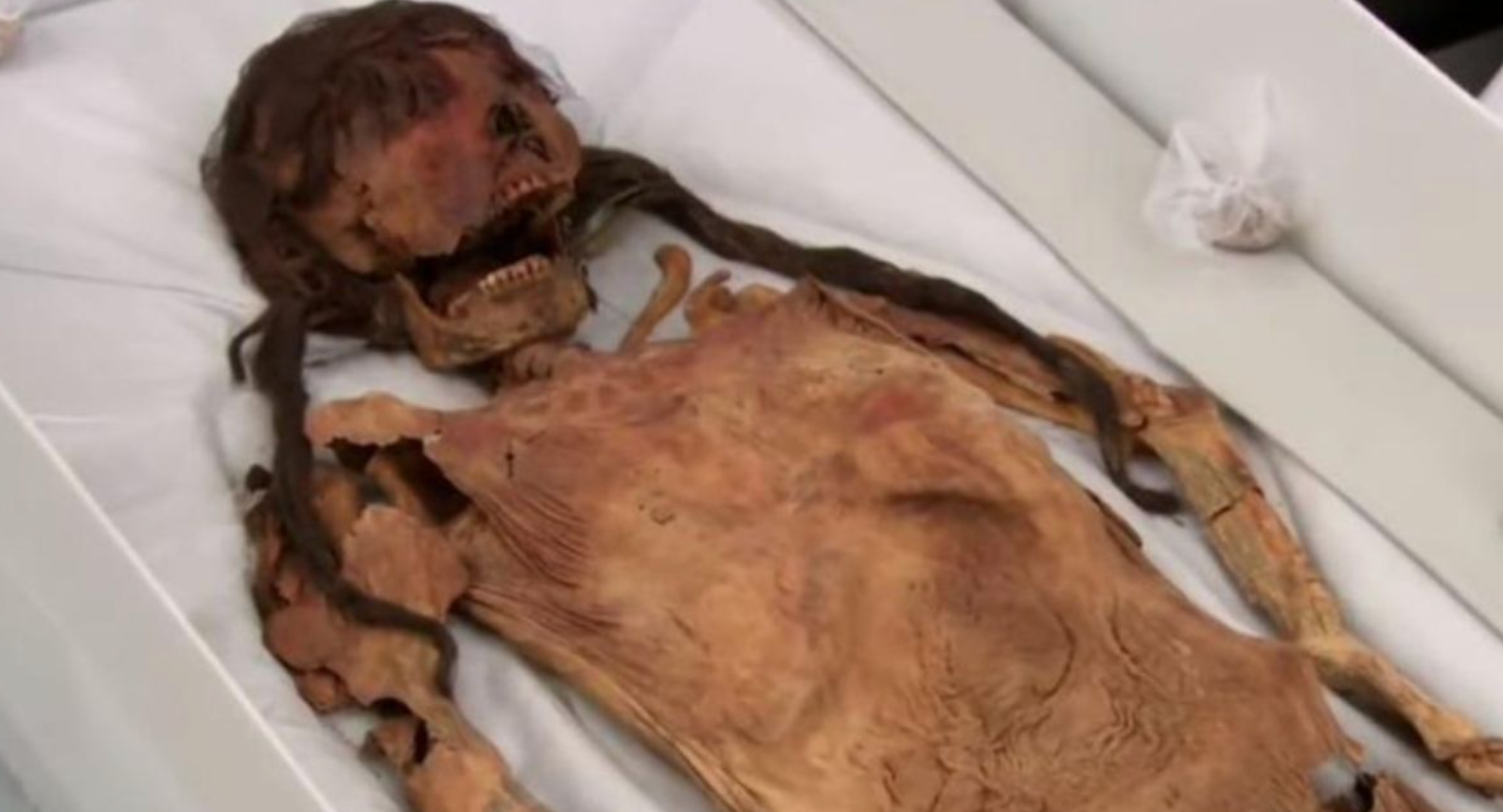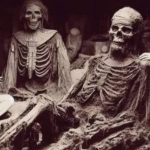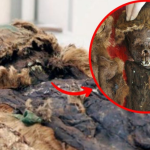At the El Brujo archaeological site, researchers have uncovered a remarkably well-preserved female Moche mummy, whose graceful form has endured for over 1,200 years.
- mystery
- June 13, 2024

In the arid expanses of northern Peru, where the desert meets the sea, the ancient site of El Brujo stands as a testament to the rich and enigmatic history of the Moche civilization. For years, archaeologists have explored its secrets, uncovering artifacts and remnants of a society known for its artistic and architectural achievements. Yet, nothing could have prepared them for the discovery that awaited beneath the shifting sands—a discovery that would captivate the world and offer an intimate glimpse into a life lived over 1,200 years ago.
The excavation team, led by the esteemed Dr. Isabel Morales, had been methodically surveying the site for months. El Brujo had already yielded numerous treasures, including intricately painted pottery, elaborate murals, and the remains of ancient structures. But on this particular day, the team stumbled upon something extraordinary—a sealed burial chamber, hidden from the eyes of the world for over a millennium.

As the archaeologists carefully removed the stones blocking the entrance, they felt a rush of anticipation. Inside, illuminated by the harsh desert sun, lay a mummy, wrapped in delicate textiles and adorned with gold and turquoise jewelry. The preservation of the mummy was astonishing; her features were remarkably intact, her skin still clinging to her bones, and her hair, adorned with beads, cascading in graceful braids.
The discovery was nothing short of miraculous. The female mummy, who would come to be known as the Lady of Cao, had endured the passage of time with a grace that spoke volumes about the skill and care of the Moche embalmers. Her tomb was filled with artifacts that hinted at her high status: ceremonial objects, finely woven garments, and an array of jewelry that gleamed in the sunlight.

Dr. Morales and her team were captivated by the find. The Moche civilization, which flourished from approximately 100 to 700 AD, had left behind few written records, making each archaeological discovery a crucial piece of the puzzle. The Lady of Cao’s tomb was no exception. The carvings on the walls depicted scenes of rituals and ceremonies, suggesting her role as a person of significant importance, possibly a priestess or even a ruler.
Radiocarbon dating confirmed that the Lady of Cao had lived over 1,200 years ago, during the late Moche period. Further analysis revealed fascinating details about her life. Her bones indicated that she had enjoyed a high-protein diet, likely from seafood, which was abundant along the coast. However, there were also signs of physical labor, hinting at a life of both privilege and responsibility.
The preservation of her internal organs was one of the most remarkable aspects of the discovery. CT scans revealed that many of her organs were intact, providing invaluable insights into her health and lifestyle. Researchers found traces of herbs and other substances in her stomach, suggesting she may have been involved in medicinal or ritualistic practices.

The artifacts found with the Lady of Cao painted a vivid picture of the Moche culture. Elaborate ceramics, metalwork, and textiles showcased their artistic prowess, while the burial goods suggested complex social hierarchies and religious beliefs. The discovery offered a rare glimpse into the life of a high-status individual and the society in which she lived.
As news of the discovery spread, the Lady of Cao captured the imagination of people around the world. Scholars and enthusiasts alike were drawn to El Brujo, eager to learn more about the enigmatic Moche civilization. The Lady of Cao’s tomb became a symbol of the enduring mysteries of ancient Peru, a reminder of the intricate tapestry of human history waiting to be unraveled.
For Dr. Morales and her team, the discovery of the Lady of Cao was the culmination of years of dedication and hard work. But it was also the beginning of a new journey—a quest to understand the Moche people and their legacy. As they continued their excavations, they knew that each artifact, each piece of pottery, and each fragment of history brought them one step closer to unlocking the secrets of a civilization that had long since vanished into the sands of time.
And so, in the quiet stillness of the desert, beneath the ancient sun, the Lady of Cao remained—a guardian of the past, a bridge to a forgotten world, and a testament to the enduring spirit of discovery.









